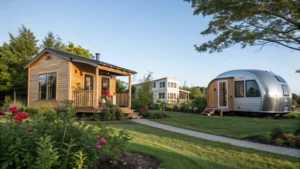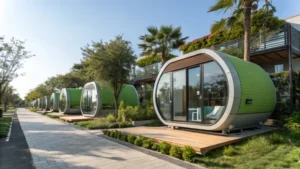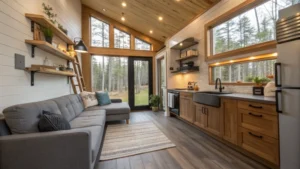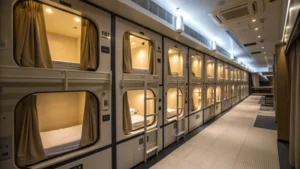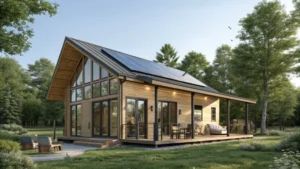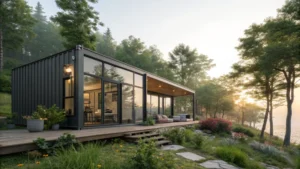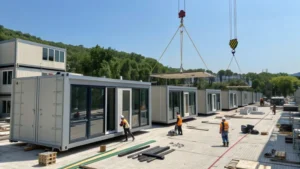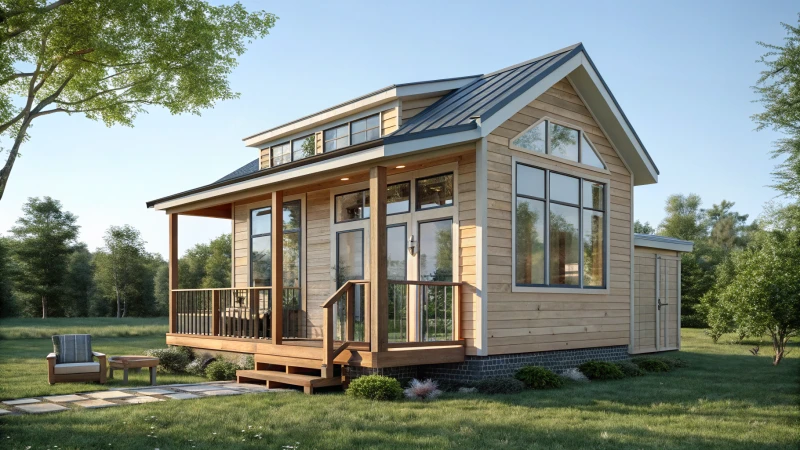
Ever wondered how small a tiny house can really get?
The smallest tiny house I've ever seen is about 8 square feet, designed for emergency or remote housing. These mini homes are all about efficiency, durability, and easy transport, perfect for disaster relief and temporary shelter needs.
Honestly, when I first stumbled upon these ultra-compact homes, I was both amazed and slightly claustrophobic just thinking about it! Picture this: a living space smaller than most closets but ingeniously crafted to meet urgent housing needs. It’s fascinating how these tiny houses challenge our traditional notions of space and comfort. Let's dive deeper into how these compact wonders are reshaping our approach to living spaces and their myriad applications across different sectors.
The smallest tiny house is only 8 square feet.True
The context states that the smallest tiny house ever recorded is 8 square feet.
Tiny houses are not suitable for emergency housing.False
The context highlights that tiny houses are ideal for emergency housing.
How Are Ultra-Compact Homes Designed?
Dive into the world of ultra-compact homes and uncover the clever design strategies that make them both functional and chic.
Ultra-compact homes are ingeniously designed with space optimization, multifunctional furniture, and innovative layouts. They emphasize efficiency, sustainability, and adaptability, making them perfect for various uses like tourism and emergency housing.
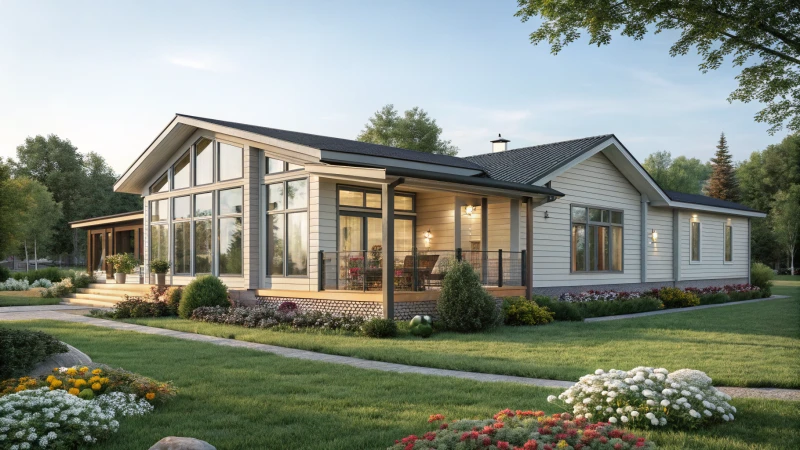
When I first stumbled upon the concept of ultra-compact homes, I was immediately captivated by how such tiny spaces could be so thoughtfully designed. It got me thinking about my own living space and how much we often take for granted when it comes to roominess.
Innovative Space Optimization
Ultra-compact homes often measure under 100 sq ft, yet they manage to pack in all the essentials. Designers utilize vertical space, employ sliding doors, and install built-in storage solutions to maximize every inch. Multifunctional furniture1 plays a crucial role, transforming living areas into sleeping quarters or workspaces. I remember visiting a friend's tiny house once, and how their coffee table magically transformed into a dining area with a simple flip.
Sustainability and Material Efficiency
Using sustainable materials is key in the design of ultra-compact homes. Materials like bamboo and recycled steel not only reduce environmental impact but also contribute to the durability of the structure. Incorporating energy-efficient appliances and solar panels further enhances their eco-friendliness. Eco-friendly designs2 are particularly appealing to the eco-tourism market.
Modular and Scalable Designs
These homes are frequently modular, allowing them to be expanded or reconfigured as needed. This scalability is vital for emergency housing3, where rapid deployment is essential. Modules can be connected to create larger living spaces or detached for individual units, depending on demand.
| Design Element | Purpose |
|---|---|
| Multifunctional Furniture | Maximizes usable space |
| Sustainable Materials | Reduces environmental footprint |
| Modular Layouts | Facilitates easy expansion and reconfiguration |
| Energy Efficiency | Lowers operational costs and environmental impact |
Portability and Adaptability
Some ultra-compact homes are designed with portability in mind, built on trailers for ease of movement. This feature is particularly useful for mobile offices4 or temporary event spaces, providing flexibility and reducing logistics costs. The adaptability of these homes makes them suitable for diverse climates and terrains.
Balancing Aesthetics and Functionality
While functionality is paramount, aesthetics are not overlooked. Designers blend modern styles with practical layouts, ensuring these compact dwellings remain appealing to the eye. This balance is critical in luxury markets where visual appeal can significantly impact guest satisfaction.
The design strategies behind ultra-compact homes are multifaceted, addressing both practicality and style preferences. By leveraging innovative solutions and sustainable practices, these homes offer versatile living options across various sectors.
Ultra-compact homes are usually over 200 sq ft.False
Ultra-compact homes typically measure under 100 sq ft.
Bamboo is used in ultra-compact home construction.True
Bamboo is a sustainable material used for durability and eco-friendliness.
What Materials Are Used in Building Tiny Houses?
Tiny houses are the embodiment of simplicity and sustainability. Ever wondered what makes these small spaces both sturdy and stylish?
Tiny houses blend wood, metal, and composite materials to create cozy yet durable homes. Wood offers warmth and charm, while metals like steel ensure strength. Composites provide cutting-edge insulation and eco-friendliness, making tiny homes sustainable and efficient.

Wood: The Traditional Choice
When I first thought about building a tiny house, my mind drifted to wood. There's something undeniably comforting about it—perhaps it's the way it reminds me of childhood summers spent in cozy cabins. Wood is a classic choice for tiny homes due to its natural beauty and warmth. Cedar, with its insect-resistant properties, and pine, known for its versatility and budget-friendly nature, were at the top of my list. And then there's bamboo—it's incredible how fast it grows! It's like nature's renewable gift.
- Cedar: Known for its durability and resistance to insects.
- Pine: Offers a budget-friendly option with versatility.
- Bamboo: A sustainable choice, growing rapidly and requiring fewer resources.
| Wood Type | Durability | Cost | Sustainability |
|---|---|---|---|
| Cedar | High | $$ | Moderate |
| Pine | Moderate | $ | Low |
| Bamboo | High | $$$ | High |
Metal: Modern and Sturdy
I remember visiting a friend's newly built tiny home and being awestruck by its sleek metal siding. It had this modern, industrial vibe that was surprisingly inviting. Metals like steel provide exceptional structural support and longevity. If you're someone who loves hitting the road, aluminum might be your best friend—it's lightweight and doesn't mind a little rust.
- Steel: Offers excellent structural strength5 and longevity.
- Aluminum: Lightweight and resistant to corrosion, ideal for movable homes.
Composite Materials: The Future of Tiny Homes
During my journey into tiny house construction, I stumbled upon composite materials and was intrigued by their potential. Fiber cement panels, for instance, offer a robust blend of strength and insulation. They're like the superheroes of building materials—eco-friendly and low-maintenance, making them ideal for sustainable living.
- Eco-Friendly: Often made from recycled materials.
- Low-Maintenance: Resistant to pests and weather conditions.
| Material | Pros | Cons |
|---|---|---|
| Fiber Cement | Durable, Fire-resistant | Heavy, Higher Cost |
| Steel Reinforced | Strong, Long-lasting | Expensive, Requires Tools |
Insulation Options: Staying Warm or Cool
Keeping a tiny home comfortable in all seasons is crucial, and proper insulation is key. I once used spray foam in a project because its high R-value made it perfect for those snug spaces. But if you're looking for an eco-friendly option, recycled denim insulation—yes, from old jeans!—can be an excellent choice.
- Spray Foam: High R-value per inch, great for tight spaces.
- Recycled Denim: Eco-friendly insulating properties6, made from old jeans.
With all these options available, choosing the right materials allows us to craft tiny homes that are as unique as we are. Whether you're prioritizing cost-effectiveness or sustainability (cost-efficiency7), these materials offer a path to creating your perfect little sanctuary.
Cedar is highly resistant to insects.True
Cedar is known for its natural oils that repel insects.
Steel is lightweight and corrosion-resistant.False
Steel is strong but not lightweight or inherently corrosion-resistant.
Can Tiny Houses Be Used for Luxury Tourism?
Imagine swapping the usual hotel suite for a chic tiny house, where luxury is reimagined and every corner whispers sophistication.
Yes, tiny houses can indeed be used for luxury tourism by integrating high-end amenities, bespoke designs, and eco-friendly features. They create intimate settings perfect for travelers who crave exclusivity and sustainability.
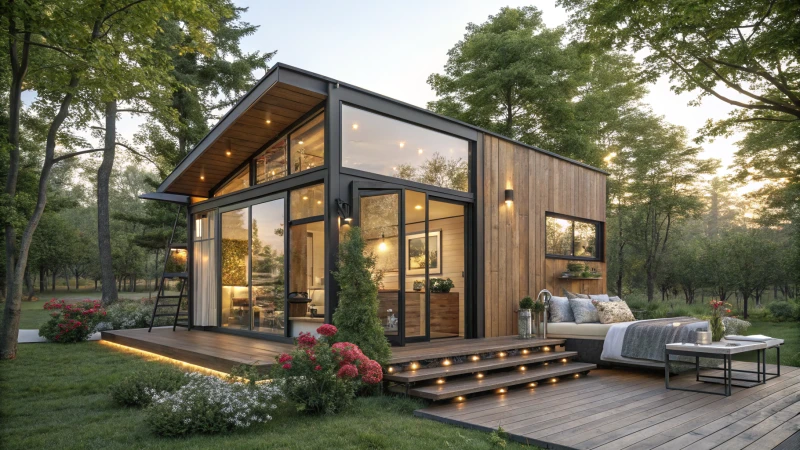
The Allure of Tiny Luxury
You know that feeling when you step into a space that seems to wrap its arms around you, making every moment feel special? That's what a luxury tiny house offers. These little gems are redefining what it means to travel in style. Unlike the usual hotel fare, tiny houses allow for personalized experiences8 that feel tailor-made just for you.
Features That Define Luxury
I remember stepping into a tiny home that had me questioning everything I thought I knew about luxury. Who would've thought that a home just a fraction of the size of my apartment could pack so much punch? From smart home systems that seemed to read my mind to interiors that looked straight out of an architectural digest, luxury tiny homes often surprise guests with:
- Smart Home Technology
- Custom Interior Design
- Eco-Friendly Materials
These aren't just buzzwords; they translate into real comfort and sustainable elegance, merging modern conveniences with a conscious lifestyle.
| Feature | Description |
|---|---|
| Smart Technology | Integrates automation for convenience |
| Custom Interiors | Tailored designs to meet guest tastes |
| Eco-Friendly | Uses sustainable and energy-efficient materials |
Customization and Aesthetic Appeal
If you've ever dreamt of staying in a place that feels like it's been plucked from your imagination, tiny homes deliver just that. Developers have a knack for transforming these spaces into dreamscapes—from cozy woodland retreats to ultra-modern sanctuaries. This customizability9 is what draws in those who seek unique vacation experiences.
Targeting the Eco-Conscious Traveler
Today's travelers, much like you and me, are increasingly eco-conscious. We want more than just a getaway; we want to leave behind only footprints, not carbon. Tiny homes make this possible by using less land and energy, all while ensuring the comfort we expect from a top-tier stay. They promote sustainable tourism through:
- Minimal Land Usage: Preserving natural landscapes.
- Energy Efficiency: Lower power consumption with smart tech.
- Sustainable Materials: Use of recycled or locally sourced materials.
These features call out to environmentally aware guests10 who are seeking guilt-free luxury that aligns with their values.
Examples of Tiny House Resorts
It's always inspiring to see ideas come to life, and several resorts have beautifully woven tiny homes into their offerings, redefining luxury lodging in the process:
- Resort A: Offers a collection of themed tiny homes with personalized services.
- Resort B: Focuses on sustainable practices and eco-friendly designs.
- Resort C: Provides all-inclusive packages with high-end amenities.
Adapting to Market Trends
As someone who loves staying ahead of trends, I can't help but marvel at how luxury tiny houses are carving their niche in the travel world. They promise bespoke experiences11 that blend comfort with conservation, perfectly catering to a growing market of travelers who won't settle for anything less than extraordinary. This shift makes tiny houses not just an alternative but a standout choice in the competitive luxury tourism landscape.
Tiny houses in luxury tourism use eco-friendly materials.True
Luxury tiny homes emphasize sustainability with recycled and local materials.
All tiny houses lack smart technology features.False
Luxury tiny homes often include smart technology for convenience.
Are Tiny Houses a Sustainable Living Solution?
Imagine living in a home where every inch serves a purpose, reflecting a lifestyle choice that treads lightly on our planet.
Tiny houses offer a sustainable living solution by minimizing energy and material use. Their compact design encourages eco-friendly practices, such as using renewable energy and sustainable materials, while promoting a minimalist lifestyle that reduces overall consumption.
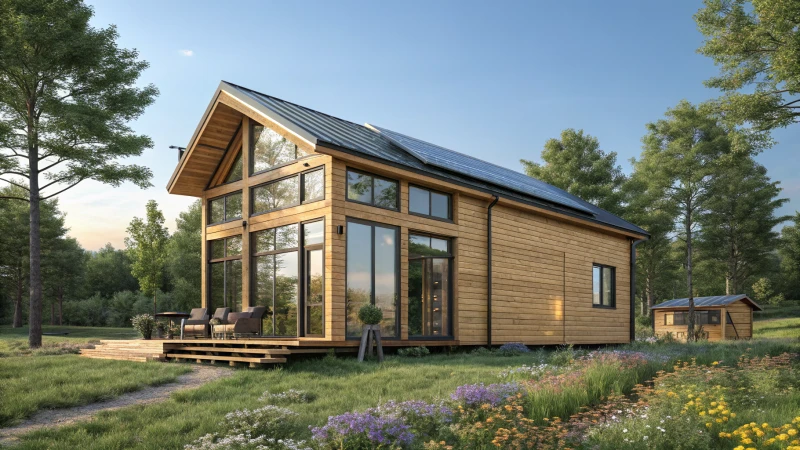
Environmental Impact of Tiny Houses
Living in a tiny house feels like an adventure every day, as these homes are usually under 500 square feet. I remember the first time I stayed in one; it was like stepping into a world where less really meant more. Fewer materials are needed for construction, which makes you feel good about reducing your footprint. Many are made from reclaimed wood or recycled steel, turning what might have been waste into something beautiful and functional.
A study from the Journal of Industrial Ecology shows that downsizing to a tiny house can cut energy consumption by up to 45%. Imagine installing solar panels on your roof and knowing you’re making a real difference! This reduction in material usage is one of the key advantages of tiny homes12.
Resource Efficiency and Waste Reduction
Adopting a minimalist approach wasn’t just about decluttering my space; it was about decluttering my life. When you live in a tiny house, you start to focus on what truly matters. I found myself buying less, wasting less, and cherishing more. This shift in lifestyle can lead to up to a 60% decrease in waste output compared to traditional homes.
Many tiny houses also come equipped with efficient water systems, like composting toilets and rainwater collection systems. It's amazing to see how much water you can save when every drop counts.
The Role of Mobility and Flexibility
One of the things that really excited me about tiny houses is their mobility. I once took my tiny home on wheels across the country, stopping wherever the scenery called my name. This flexibility not only adds a sense of freedom but also supports sustainable living practices13 by avoiding the need for permanent structures.
Tiny House Movement and Social Implications
The movement isn't just about personal sustainability; it's about community and solving bigger problems. I've seen firsthand how cities use tiny house projects to provide affordable housing for those in need. It’s incredible to see such small spaces make such a big impact, especially for low-income families or those experiencing homelessness.
These homes are also affordable, making homeownership possible for many people, including retirees looking for a simple yet fulfilling lifestyle.
| Pros | Cons |
|---|---|
| Reduced environmental impact | Limited living space |
| Lower utility bills | Zoning restrictions |
| Flexibility to move | Minimalist lifestyle required |
While tiny houses have their challenges—like navigating zoning laws or adjusting to smaller spaces—understanding these factors can help you decide if tiny house living14 aligns with your personal sustainability goals. Every time I look around my tiny home, I'm reminded of the freedom and fulfillment it brings.
Tiny houses reduce energy consumption by 45%.True
A study found downsizing living space can cut energy use by up to 45%.
Tiny houses increase waste output by 60%.False
Tiny homes report a 60% decrease in waste compared to average households.
Conclusion
Explore the world of tiny houses, from ultra-compact designs for emergency housing to luxurious eco-friendly retreats, showcasing innovative space optimization and sustainable living solutions.
-
Learn how multifunctional furniture can transform limited spaces, adding both utility and style. ↩
-
Discover eco-friendly design options that enhance sustainability in tiny living. ↩
-
Explore modular housing solutions that offer quick deployment during emergencies. ↩
-
Understand how portable tiny homes can serve as adaptable mobile offices. ↩
-
Explore why metal is a preferred choice for its strength and modern appeal. ↩
-
Discover how cedar wood enhances durability and aesthetics in tiny house construction. ↩
-
Find budget-friendly materials that balance quality and affordability for tiny homes. ↩
-
Discover how tiny houses can be customized to provide unique and personal vacation experiences. ↩
-
Learn about the diverse customization options available for designing luxury tiny homes. ↩
-
Explore eco-friendly practices that make tiny house resorts appealing to environmentally conscious travelers. ↩
-
Understand how bespoke experiences in tiny house travel meet luxury and personalization demands. ↩
-
Explore the benefits of tiny homes, including environmental advantages and lifestyle shifts that contribute to sustainability. ↩
-
Discover how tiny houses contribute to sustainable living through efficient resource use and minimal environmental impact. ↩
-
Learn about potential challenges of living in a tiny house, from zoning restrictions to lifestyle adjustments. ↩



